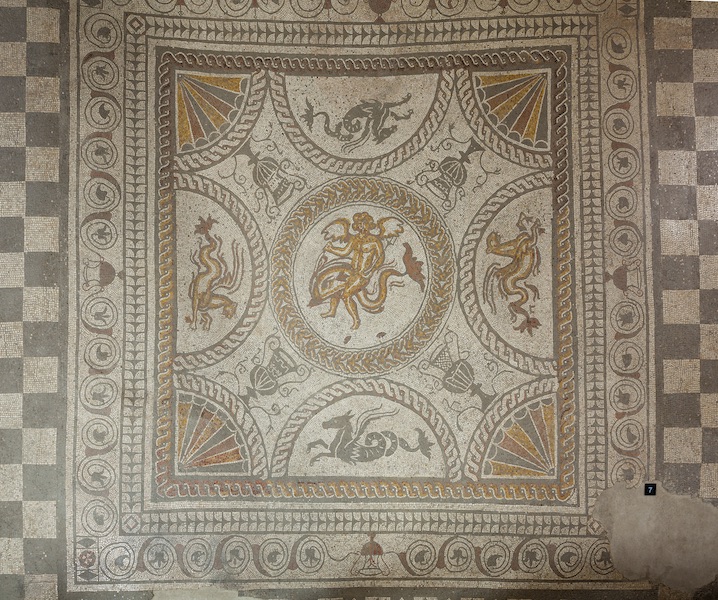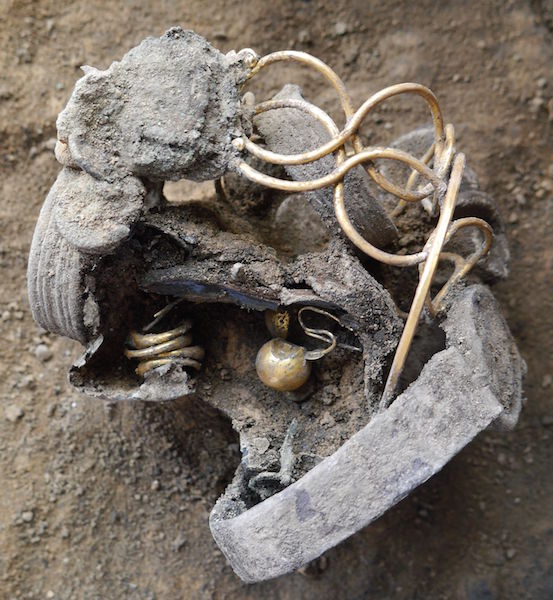When Luke Irwin decided to convert an old barn on his Wiltshire property, he was not exactly aiming to make an important archaeological discovery. But when the electricians he hired to lay some underground electricity cables started drilling, they struck a hard layer 18 inches beneath the surface, which turned out to be the remains of an ornate Roman mosaic.
The discovery proved to be revelatory: Irwin was living on the site of one of the largest Roman villas in Britain. Archaeologists from Historic England verified that the mosaic was part of the floor of a grand villa built between 175 and 220 AD. For the archaeologist David Roberts, the site is ‘unquestionably of enormous importance’.
Irwin’s surprise discovery is one of the most significant in recent years, yet there is a history of lucky Roman finds in Britain. Here are some of the most notable to have emerged in the last few decades:
Statue head of God Mithras (2nd-3rd century). © Museum of London

London Mithraeum
Some 400,000 people flocked to visit the Roman Temple of Mithras when it was uncovered in 1954. The temple even caught the attention of the Prime Minister Winston Churchill, its fate being twice discussed in Cabinet.
Yet the discovery nearly didn’t happen. In 1952, archaeologists began excavating the area around the now covered River Walbrook in the City of London before the construction of a new office block. As the excavation was drawing to a close in 1954, a large stone building was discovered, then an altar. The structure was initially deemed unremarkable: it was only on the final day of the excavation that archaeologists found a carved head of Mithras – a virile god whose cult spread across the empire in the third century AD. Its emphasis on sacrifice and rebirth made it a significant threat to early Christianity. The statue of Mithras, among other finds, is now housed at the Museum of London.
Cupid on a Dolphin mosaic at Fishbourne Roman Palace. Courtesy of Fishbourne Roman Palace / Sussex Archaeological Society

Fishbourne Roman Palace
The discovery of Fishbourne Roman Palace – one of the largest Roman sites in Britain – also happened by accident. During the digging of a water main trench, the palace’s mosaic floors and massive wall foundations were uncovered. Excavations took place between 1961 and 1969 under the direction of archaeologist Barry Cunliffe, and more followed in subsequent decades.
Cunliffe and his team uncovered the largest collection of in-situ mosaic floors in Britain, and some of the oldest: most were laid at the time of the Palace’s construction in around 75–80 AD. One of the palace’s most impressive mosaics, Cupid on a Dolphin (pictured), was laid at a later date of around 160 AD and discovered in 1980.
Roman skull of Liverpool Street ticket hall. © Crossrail

Crossrail skulls
Roman remains have continued to delay London construction in the 21st century. Since 2009, the building of the new Crossrail has unearthed more than 10,000 items, including skeletons from a suspected Black Death burial ground, prehistoric animal bones and the human remains from the infamous ‘Bedlam’ psychiatric hospital.
Beneath the Bedlam burial ground near London’s Liverpool Street Station, tunnellers were surprised to discover 20 Roman skulls, Crossrail reported in October 2013. The find was particularly puzzling because the skulls were without bodies. A number of theories have arisen explaining their origins, including that they were decapitated victims of Boudicca’s sacking of London; that they were separated from their bodies when they were washed away from the graves in a flood; or that they were trophy heads collected by Roman soldiers.
Fenwick Treasure. Courtesy of the Colchester Archeological Trust

Buried treasure
In 2014, during a six-month excavation before a £30 million redevelopment of the Williams & Griffin department store on Colchester High Street, Essex, a box of fine jewellery was discovered buried beneath the remains of a Roman house. Experts believe that the box was buried in 61 AD during the Boudiccan Revolt, when British tribes burnt down the town in a rebellion against Roman rule.
The box contained two gold armlets, a silver chain necklace, a silver armlet, two silver bracelets, a small bag of coins, two sets of gold earrings and five gold finger rings. The quality of the jewellery suggests that a wealthy woman had buried the box to hide them from the enemy. The ‘Fenwick Treasure’, named after the department store’s group, has recently gone on display at Colchester Castle.


